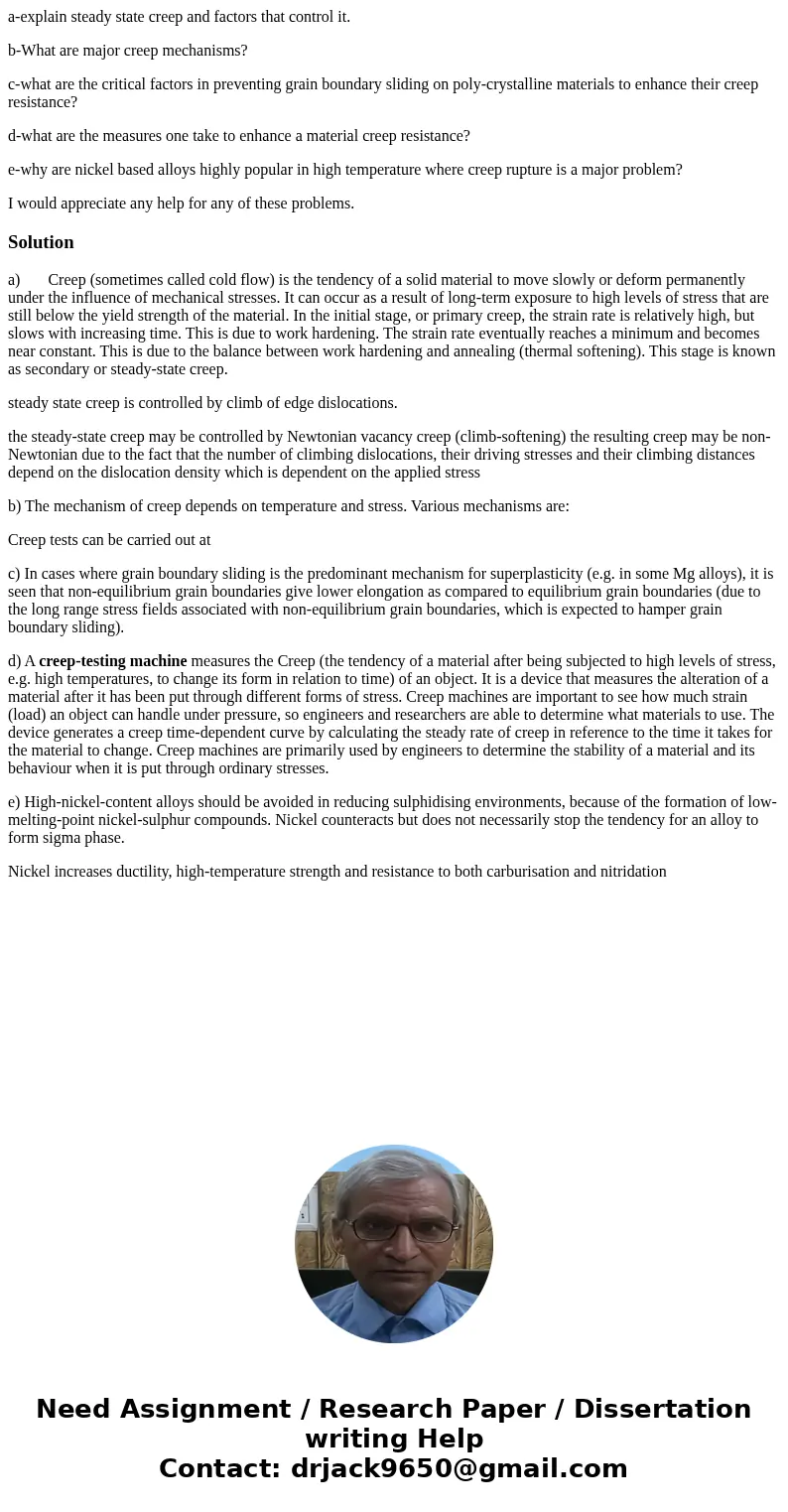aexplain steady state creep and factors that control it bWha
a-explain steady state creep and factors that control it.
b-What are major creep mechanisms?
c-what are the critical factors in preventing grain boundary sliding on poly-crystalline materials to enhance their creep resistance?
d-what are the measures one take to enhance a material creep resistance?
e-why are nickel based alloys highly popular in high temperature where creep rupture is a major problem?
I would appreciate any help for any of these problems.
Solution
a) Creep (sometimes called cold flow) is the tendency of a solid material to move slowly or deform permanently under the influence of mechanical stresses. It can occur as a result of long-term exposure to high levels of stress that are still below the yield strength of the material. In the initial stage, or primary creep, the strain rate is relatively high, but slows with increasing time. This is due to work hardening. The strain rate eventually reaches a minimum and becomes near constant. This is due to the balance between work hardening and annealing (thermal softening). This stage is known as secondary or steady-state creep.
steady state creep is controlled by climb of edge dislocations.
the steady-state creep may be controlled by Newtonian vacancy creep (climb-softening) the resulting creep may be non-Newtonian due to the fact that the number of climbing dislocations, their driving stresses and their climbing distances depend on the dislocation density which is dependent on the applied stress
b) The mechanism of creep depends on temperature and stress. Various mechanisms are:
Creep tests can be carried out at
c) In cases where grain boundary sliding is the predominant mechanism for superplasticity (e.g. in some Mg alloys), it is seen that non-equilibrium grain boundaries give lower elongation as compared to equilibrium grain boundaries (due to the long range stress fields associated with non-equilibrium grain boundaries, which is expected to hamper grain boundary sliding).
d) A creep-testing machine measures the Creep (the tendency of a material after being subjected to high levels of stress, e.g. high temperatures, to change its form in relation to time) of an object. It is a device that measures the alteration of a material after it has been put through different forms of stress. Creep machines are important to see how much strain (load) an object can handle under pressure, so engineers and researchers are able to determine what materials to use. The device generates a creep time-dependent curve by calculating the steady rate of creep in reference to the time it takes for the material to change. Creep machines are primarily used by engineers to determine the stability of a material and its behaviour when it is put through ordinary stresses.
e) High-nickel-content alloys should be avoided in reducing sulphidising environments, because of the formation of low-melting-point nickel-sulphur compounds. Nickel counteracts but does not necessarily stop the tendency for an alloy to form sigma phase.
Nickel increases ductility, high-temperature strength and resistance to both carburisation and nitridation

 Homework Sourse
Homework Sourse